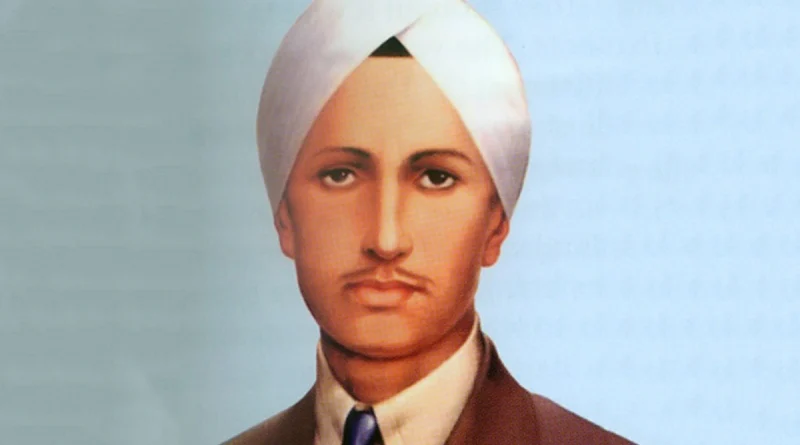Kartar Singh Sarabha: The ideal of Bhagat Singh


We hear stories about the heroes who gave their lives fighting for India’s independence. However, there were numerous fighters whose names are little known today and who have persisted in obscurity. One of those independence fighters is Kartar Singh Sarabha. Kartar Singh passed away at the young age of 19. Please tell us about Kartar Singh’s life.
Kartar Singh was viewed as ideal by Bhagat Singh. It is thought that a picture of Kartar Singh Sarabha was discovered on Bhagat Singh when he was detained. On May 24, 1896, in the Punjabi village of Sarabha’s Ludhiana district, Kartar Singh was born. Kartar was raised by his grandfather after losing his father when he was a little boy.
Mangal Singh was Kartar Singh’s father, while Sahib Kaur was his mother. On May 24, 1896, he was born. He relocated to Orissa with his uncle after completing his high school education.
He was sent to San Francisco at the age of 16 to attend the University of California, Berkeley to study chemistry.
The emergence of the Ghadar Movement in 1913 served as a unifying force for all of the Indians residing in America and Europe. The Ghadar Movement sought to expel British and European imperialists from their homeland.
The party publication in Punjabi, Gadar, was given to Kartar Singh. He wrote, revised, and printed on a hand-operated machine the official Punjabi Gadar. Indians everywhere could read Gadar because it was written in Punjabi, Hindi, Urdu, Bengali, Gujarati, and Pushto.
The Yugantar Ashram, the residence where the Party’s headquarters and volunteers’ homes were located in San Francisco, served as the newspaper’s printing facility.
The decision to declare war on the British was published in the Gadar of August 5, 1914. Indians from all around received copies of this edition, notably Indian soldiers stationed in British cantonments.
A month before the remaining Gadar members, on September 15, 1914, Kartar Singh, Satyen Sen, and Vishnu Ganesh Pingle departed the country. In November, they travelled via Colombo to reach Calcutta. During his stay, he had the opportunity to meet Rash Behari Bose, a legendary revolutionary, and Jatin Mukherjee of Jugantar. As soon as the British learned that Ghadarites had arrived in India. And eventually, a lot of Ghadarites were apprehended. They intended to assault Mir Mian and the Ferozpur cant while organising an insurrection in Ambala.
Kartar Singh, on the other hand, travelled with Pingle to the cantonments in Meerut, Agra, Benares, Allahabad, Ambala, Lahore, and Rawalpindi in an effort to incite the Indian soldiers who had been enlisted in the British army to rebel. On February 19th, numerous other Ghadar movement leaders were detained when traitor Kirpal Singh revealed the scheme.
At Chak No. 5 in Sargodha, Kartar Singh made one final manoeuvre and tried to cheer up the 22 Cavalry men. Eventually, he was detained and taken to Lahore along with other movement leaders. The infamous Lahore Conspiracy Case is what this case is known as. He received a death sentence in September 1915.
The case’s judge remarked that he is immensely proud of the crimes he committed. He is the most dangerous of all rebels and does not deserve sympathy. He should be executed.
With a smile on his face and a heart full of love for his nation, this 19-year-old kid hung from the rope.
DISCLAIMER: The author is solely responsible for the views expressed in this article. The author carries the responsibility for citing and/or licensing of images utilized within the text.
